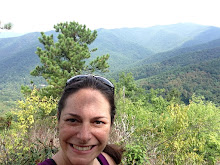After spending the first part of my summer in India and Sri Lanka, I was not prepared for what I found when I arrived in Africa for the first time: well-maintained, paved roads; water you could drink right out of the tap; modern buildings downtown that made you feel you were in a European town…

Arriving in Windhoek, Namibia with 16 fellow theology students/professors was a bit of a shock. This was not the Africa we had heard about on the news or from Bono. Where was the poverty? We found it the next day when our tour guide, Urbanus, led us to the top of a hill overlooking the city and began to explain the history of Windhoek. He pointed out the upscale neighborhood where all of the wealthy (and white) residents live. He then began to describe how, under apartheid (Namibia was under the control of South Africa for decades), people were forcibly uprooted from their homes and segregated into settlements based on race and tribe. Black residents were resettled in Katatura, which means “the place where we do not want to live.”

We later drove down the hill, past the wealthy subdivisions, into Katatura. There, we saw endless rows of makeshift tin shacks, clinging at precarious angles onto sloping hillsides, as far as we could see. Bumpy dirt roads twisted through the sea of tin and cardboard, with no grocery stores or public transportation nearby. This is the Africa we had been expecting. This is the Namibia with an unemployment rate of somewhere between 35% (the official figures) and 75% (our guide’s estimate). This is the Namibia where over 20% of the population is HIV positive. This is the Namibia that is classified by the World Bank as a “middle income” country, but which has one of the highest rates of income disparity (gap between rich and poor) in the world. This is the legacy of colonialism and apartheid, which determined people’s opportunities, education, neighborhood, and even gravesite based solely on the color of their skin.
 The tour also included visits to the clean, shady cemetery where whites had been buried under apartheid (now, those who can afford it can be buried there – but few blacks can afford the fees, even today), as well as the dusty cemetery for blacks, littered with broken headstones – most of which only have a number, not a name. Even in death, the grip of racism continues to separate people. The cemeteries really had an impact on our group, making us feel a deep sense of hopelessness.
The tour also included visits to the clean, shady cemetery where whites had been buried under apartheid (now, those who can afford it can be buried there – but few blacks can afford the fees, even today), as well as the dusty cemetery for blacks, littered with broken headstones – most of which only have a number, not a name. Even in death, the grip of racism continues to separate people. The cemeteries really had an impact on our group, making us feel a deep sense of hopelessness. 
Luckily, our next stop was a meeting with Bishop Kameeda, head of one of the branches of the Lutheran Church in Namibia. During the struggle for independence, the church had been a prophetic voice speaking out against the oppressive policies of South African rule. Now, the church is turning its attention to the oppressive forces of poverty and unemployment that continue to keep many black Namibians from flourishing. We were all inspired by the Bishop’s passion to help those in need, and although his proposal for providing monthly income grants to all Namibians is somewhat controversial, our hope was renewed for Namibia’s future.
Africa is more than its unemployment and HIV rates. It’s more than its infrastructure and water supply. Over and over again during our two weeks there, it was the spirit, strength and warmth of the people that gave us a real sense of why we came to Africa, and ensured that we will never forget our time there. I hope to share more stories of the people we encountered with you soon…

1 comment:
Diane, karibu nyumbaani (welcome home). Do they speak Swahili in Namibia? I wasn't sure ... I'm sure as hell getting a yearlong Swahili lesson, starting now! Wonderful to read your writing on the trip, I can already understand its resonance. can't wait to see more. Love from Tanzania.
Post a Comment